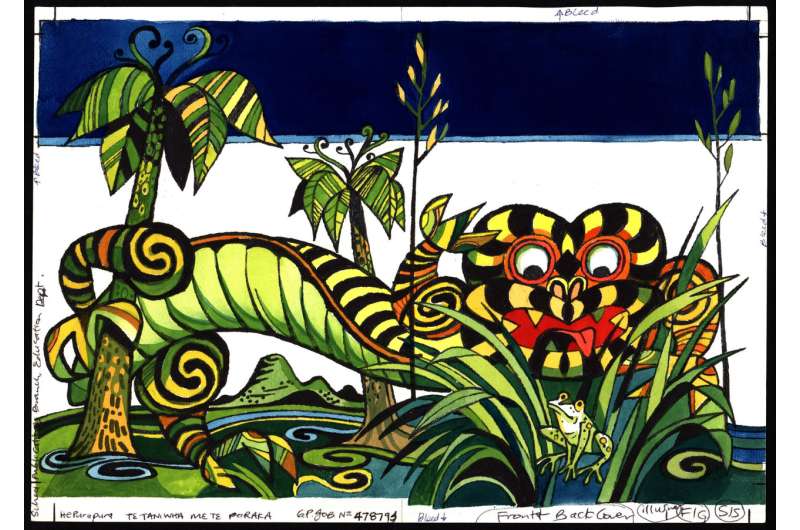How children's picturebooks can disrupt existing language hierarchies

There are many factors that shape the .
Some languages seem more pleasant to listen to, easier to learn or more logical. These perceptions are generally influenced by our attitudes towards the speakers of a language and the different situations in which the language is spoken.
One reflection of the differential status of languages comes through in bilingual children's picturebooks. Here I explore how te reo M膩ori (the indigenous language of New Zealand) is represented and argue that the way languages are displayed in bilingual picturebooks can disrupt the status quo.
Linguistic landscapes
As a sociolinguist, I am interested in the representation of languages in bilingual picturebooks. This not only reflects existing attitudes towards languages, but it can also be powerful in .
As well as telling a story or giving information, the presence of a minority language in a picturebook can serve a . The way in which languages are presented in bilingual children's books may encourage readers to value a language, or perhaps use this language more frequently, thus positively affecting its vitality.
To show the different ways in which minority indigenous languages can be featured in children's picturebooks, I examine the linguistic landscapes of some M膩ori-English picturebooks that are disrupting the status quo of language hierarchies.
Linguistic landscape is a term used to describe the (usually visual) presence of different languages in public spaces. In my work with picturebooks I use this term to describe the space occupied by languages within a book. Language hierarchies relate to the idea that in any society some languages have more status than others.
I use these concepts to examine the comparative presentation of different languages in three areas: which language is presented first, which language uses a bigger font, and which language presents more information.
I argue that these three factors are reflections of the relative status of languages in a bilingual picturebook and they subtly indicate to the reader which language is more important.
Overturning existing hierarchies
In Aotearoa/New Zealand the indigenous M膩ori language (te reo M膩ori) has official language status, but it is spoken by a (3.73% of the total population and 21.3% of the M膩ori population). However, some bilingual picturebooks have opted to assign primary status to te reo M膩ori in terms of order and font size.
Children's picturebooks are , but some bilingual picturebooks disrupt the status quo and promote an alternative language hierarchy.
For example, K膩kahu鈥擥etting Dressed (Brown & Parkinson, 2015) is a board book in a series self-published purposefully by to encourage the use of te reo M膩ori with young children. On its front cover, the M膩ori word in the title (K膩kahu) is much larger than the English (Getting Dressed). In the body of the book, M膩ori is privileged in several ways.
M膩ori is given first on the page, with English underneath; M膩ori is presented in a much larger font size than English; and M膩ori is given in a bold typeface, whereas English is given in normal typeface.
, which can be translated as "The Spirit of Waitangi", is also part of a self-published series, written by Sharon Holt and designed to support teachers to bring te reo M膩ori into English medium classrooms via song.
This book (and others in the ) features a brightly coloured title in te reo M膩ori only. It is bigger and more bold than any other writing (in English) on the cover.
The first few pages before the body of the story feature publishing information, a translation of the lyrics, and teaching notes for teachers in English. However, in the body of the book, only te reo M膩ori is used. At the back of the book, the lyrics for the song are given in M膩ori only with guitar chords. The picturebook includes a CD recording of the song, which also features a title in M膩ori and not English.
The power of the picturebook
The many different factors that influence the status of a language are often inter-related, but if a language is not valued, this may lead to people using it in fewer situations, and even to its eventual demise.
The two picturebooks I have discussed illustrate how an often underestimated form of children's literature can be used to support an indigenous language with a minority of speakers. Children and adults reading and listening to these books will see, albeit subconsciously, which language is being given higher status. In this way, new language attitudes are being formed and this may result in the adjustment of existing language hierarchies.
Provided by The Conversation
This article was originally published on . Read the .![]()















